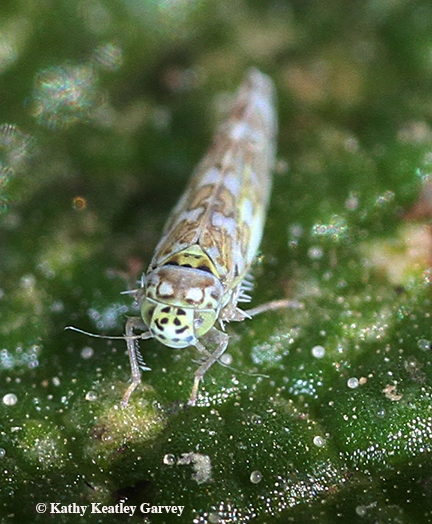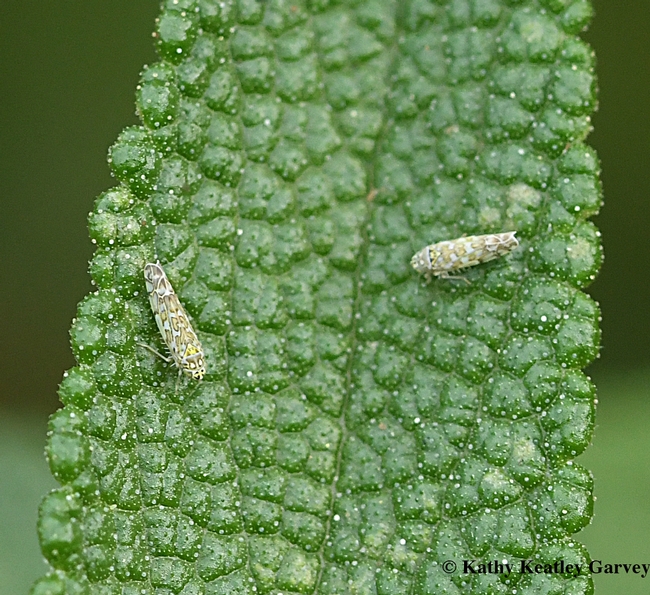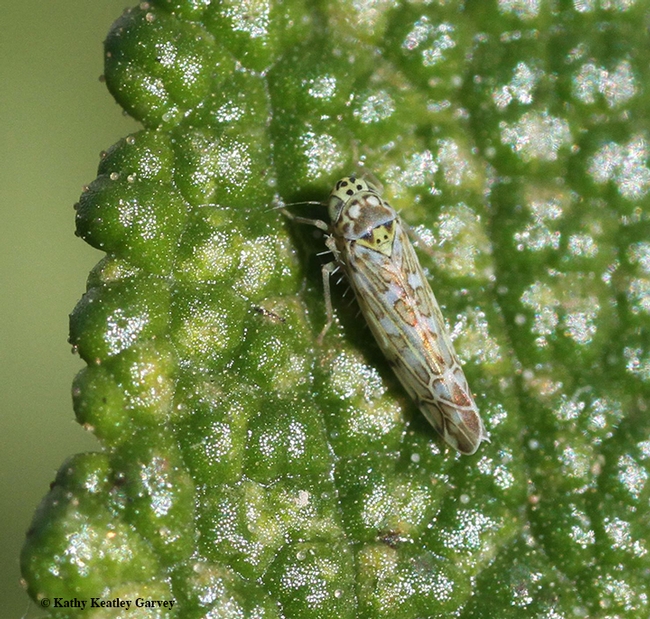
They're aptly named.
Leafhoppers are tiny insects (family Cicadellidae) that suck nutrients from plants.
But have you ever looked at them really closely?
We spotted scores of mottled leafhoppers last week on our Salvia mellifera (black sage) and Verbena in our pollinator garden in Vacaville, Calif. We stirred the leaves and these near-microscopic insects hopped off.
They. Hopped. Over. To. Other. Leaves.
"Leafhoppers feed on many different fruit, vegetable, flower, and woody ornamental hosts," according to the UC Statewide Integrated Pest Management Program (UC IPM) website. "Most species of leafhoppers feed on only one or several closely related plant species. Adults mostly are slender, wedge-shaped, and less than or about equal to 1/4-inch long. Leafhoppers generally are varying shades of green, yellow, or brown, and often mottled. Some species are brightly colored, while others blend with their host plant. Leafhoppers are active insects; they crawl rapidly sideways or readily jump when disturbed. Adults and nymphs and their pale cast skins are usually found on the underside of leaves."
Oh, to be a leafhopper and have those modified legs for jumping. They're not faster than a speeding bullet but they're faster than aphids, and they can "run sideways and jump," UC IPM says. "Some common leafhopper species in gardens and landscapes are the rose leafhopper, grape leafhopper, variegated leafhopper, potato leafhopper, and the aster leafhopper."
This particular leafhopper--note the leopard pattern!--on our Verbena is a Typhlocybinae (subfamily of Cicadellidae) leafhopper, Eupteryx decemnotata, according to Robert Lord Zimlich of BugGuide.Net.
What to do when you see a leafhopper on Salvia and Verbena? Grab a camera with a macro lens. Don't get too close, though, as they can "run sideways and jump," UC IPM says.
Yes, they can, and yes, they do.
Attached Images:

Two leafhoppers sharing a black sage leaf in Vacaville, Calif. They are Typhlocybinae leafhoppers, Eupteryx decemnotata, according to Robert Lord Zimlich of BugGuide.Net. (Photo by Kathy Keatley Garvey)

"Leafhoppers generally are varying shades of green, yellow, or brown, and often mottled," according to the UC Statewide Integrated Pest Management Program. This one is a Eupteryx decemnotata on black sage (Salvia mellifera) in Vacaville, Calif. (Photo by Kathy Keatley Garvey)